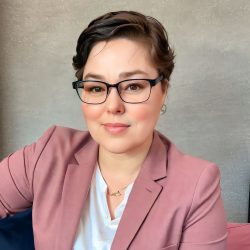
Center for Growth / Play Therapy in Philadelphia for Autism
Autism is a Pervasive Developmental Disorder (PDD). Pervasive Developmental Disorders are a range or “spectrum” of disorders that are characterized by severe impairment in developmental functions such as social skills, communication, and the presence of repetitive movements or behaviors. PDD symptoms are usually noticed early in childhood, when developmental milestones are not reached. Research shows that “early intervention” is the most effective way to treat PDD. Early intervention helps children learn the skills necessary to function in their daily life and their caregivers are given the tools to become effective coaches / cheerleaders to their child’s development.
Since Autism Spectrum Disorders and PDD are diagnosed in early childhood, the primary mode of treatment needs to be child friendly; therefore, play therapy is a go-to. Unlike adults, young children are not able to discuss their feelings with words; instead they use play to explore their feelings. Often children can be seen playing “house” or “school” and repeating the similar phrases that have been used on them. This form of play helps children make sense of their world. In the early 1900s, Anna Freud studied children and created play therapy, which is a form of psychotherapy that focuses on a child’s natural communication style: play. (Gil, 1991). This tip will cover basic information on three different play therapy interventions that can be used with children with autism.
The first intervention used to treat children with PDD, Discrete Trial Training (DTT) was designed by Lovas and colleagues at UCLA. The program lasted between two and three years and consisted of two stages. The first stage spanned one to two years. During this time the children participate in the intervention for forty hours per week where they were taught learning patterns and specific behaviors using discrete training trials (Erba, 2000). During the second phase the kids play, play, play! This stage of the program focuses on the social skills that are necessary for success in school, which many children with autism lack. The previously learned academic skills are also reinforced in this stage. This research by Lovas and colleagues has been modified over the years and today is called Applied Behavioral Analysis or ABA. The guiding principle behind ABA is that as people we all repeat behaviors that are rewarding in some way and we stop doing behaviors that no longer give us rewards. ABA can be used as an intervention for children with autism to provide structure and rewards (tokens etc.) to behaviors the parents and therapists want repeated such as communication and social skills, which behaviors that are not approved by the family and/or therapists (i.e. hitting or tantrums) are ignored and not rewarded. An example of an ABA intervention would be only giving a child a cookie if he or she says the word cookie. If the child doesn’t say anything, there is no reward, thus the cookie is the reward for the behavior of speaking. In theory, when children get a reward every time they say “cookie,” they will learn to speak words more often when they want a snack. ABA techniques can be used in a variety of settings such as home, school, playgrounds, the dinner table, etc. The interventions can also be parent or therapist directed or child directed with random rewards given for appropriate behaviors. ABA is now one of the most widely used treatments for children, adolescents, and adults with autism because of its flexibility and effectiveness (Autismspeaks, Inc.).
The second technique that can be used to treat children with autism is “floor time.” Floor time was developed by Greenspan and colleagues (Erba, 2000). Children and parents participate in this program together and their relationship is stressed. Almost all of the session time in this program is spent on the floor, just like the name suggests. The intervention is structured around six milestones that happen between the child and parents: self-calming, engaging in the relationship, two way communications, creating complex gestures, creation of ideas, and making the ideas based in reality. Greenspan developed this program because he believed that the communication and social delays found in autism are a direct result of sensory dysfunction. In theory, Greenspan would then assert that children who are provided with activities and events that trigger their senses will be able to “catch-up” socially. This treatment plan is highly effective where as 58% of participants experience positive outcomes. Another highlight of “floor time” is that the individual child’s needs are the foremost priority in every single session. At first child leads the play session, and the parents and therapists get on their level (the floor) to play with toys that the child already enjoys. As sessions go on, the parent will gradually offer the child more complex toys and activities that will begin to build upon previous strengths. The gentle nudge pushes the child to learn new skills but the comfort of mom or dad getting on their level makes the change less threatening. “Floor time” is great for families who have a kid with autism because all sessions involve direct play between parent and child, which helps with bonding, a difficult task with a child who has trouble communicating and sharing affection (Erba, 2000).
The last intervention we’ll cover in this tip is a program from North Carolina called Treatment and Education of Autistic and Related Communication Handicapped Children, also known as TEACCH. This program integrates multiple fields to help the children. TEACCH is based around an organic theory of Autism, which means its proponents believe that people with autism have “characteristics that are different but not necessarily inferior, to the rest of us (Autismspeaks, Inc.).” TEACCH approaches education of children with autism from a cognitive development and learning theory approach. TEACCH is primarily used in school settings to provide structure to the learning environment of children with autism to reduce the appearance of behaviors that get in the way of formal learning (i.e. tantrums). The program is designed so that all interventions are on a developmentally appropriate level, for example, visual supports a child can point to as an answer would be used to help children who are pre-verbal. The main goal of TEACCH is an increase in the child’s interaction with family members, educators, and peers, which is obtained by stressing individual needs with family and school involvement throughout the treatment process (Erba, 2000).
When your child gets diagnosed with autism or any other PDD, navigating the world of treatment recommendations can be daunting since there are about as many treatment options available as there are theories on what causes autism (hint: that’s a lot!). Now that you are armed with the basics on three leading play therapy treatments for autism, you can take the information from this tip, do some more searches, talk you your child’s doctor, and make some informed choices on where to start. If you would like more information on autism, or to speak to a therapist who can offer treatment please contact us at The Center for Growth.
References
Autism Speaks, Inc. (2005-2012). How is Autism Treated?. Retrieved from: http://www.autismspeaks.org/what-autism/treatment
Erba, H.W. (2000). Early intervention programs for children with autism: Conceptual frameworks for implementation. American journal of Orthopsychiatry, 70, 82-94.
Gill, E. (1991). The healing power of play: Working with abused children. New York: The Gulliford Press.




















